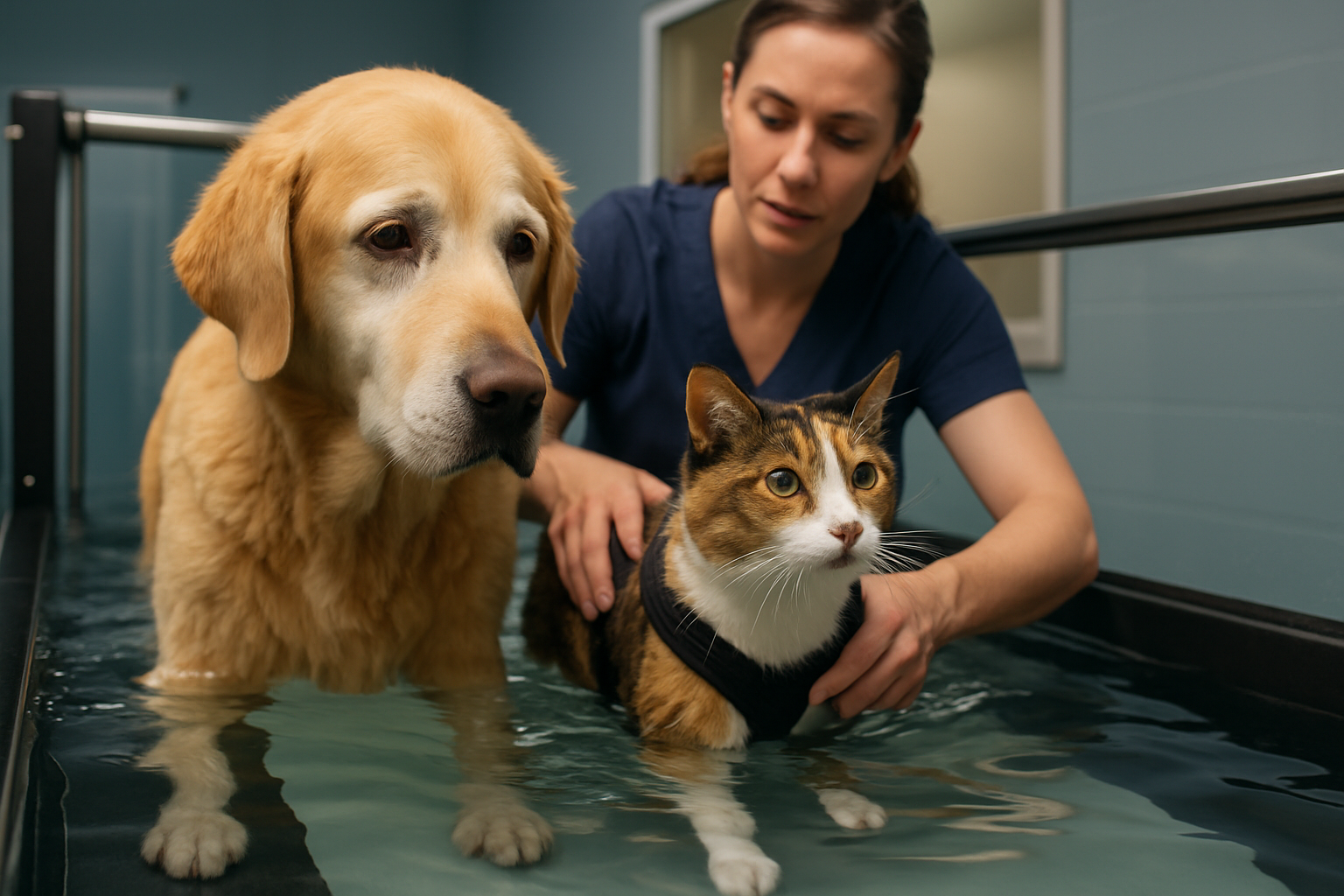Canine Hydrotherapy: Healing Paws in Water
Imagine a world where your furry friend can recover from injuries, manage arthritis, or maintain fitness through the power of water. Canine hydrotherapy, an innovative approach to pet rehabilitation, is making waves in veterinary care. This therapeutic technique harnesses the buoyancy and resistance of water to provide a low-impact, high-reward exercise environment for dogs. From post-surgery recovery to weight management, hydrotherapy is transforming the lives of our four-legged companions.

How Canine Hydrotherapy Works
Canine hydrotherapy capitalizes on water’s unique properties to provide a therapeutic environment for dogs. The buoyancy of water reduces the impact on joints and muscles, allowing for pain-free movement. Water resistance helps strengthen muscles and improve cardiovascular fitness without putting undue stress on the body. Hydrostatic pressure aids in reducing swelling and improving circulation. Sessions typically last 15-30 minutes and are tailored to each dog’s specific needs, whether it’s recovering from surgery, managing chronic conditions, or maintaining overall fitness.
Benefits Beyond Physical Rehabilitation
While hydrotherapy is renowned for its physical benefits, its advantages extend far beyond muscle and joint health. Many dogs experience reduced anxiety and improved mood after hydrotherapy sessions. The warm water and gentle exercise release endorphins, creating a sense of well-being. For older dogs or those with chronic pain, hydrotherapy can significantly improve quality of life, allowing them to move more freely and comfortably. Additionally, the mental stimulation provided by this novel form of exercise can help alleviate boredom and reduce destructive behaviors in energetic dogs.
Specialized Equipment and Facilities
The world of canine hydrotherapy has evolved to include state-of-the-art equipment designed specifically for dogs. Underwater treadmills, a cornerstone of many hydrotherapy programs, allow precise control of water depth, temperature, and treadmill speed. These machines can cost anywhere from $25,000 to $50,000, reflecting the specialized nature of the equipment. Purpose-built hydrotherapy pools, complete with ramps, jets, and filtration systems, can range from $50,000 to over $100,000. This significant investment has led to the rise of dedicated canine hydrotherapy centers, as well as the integration of hydrotherapy services in veterinary clinics and rehabilitation facilities.
Training and Certification for Canine Hydrotherapists
As the field of canine hydrotherapy grows, so does the need for qualified professionals. Several organizations now offer specialized training and certification programs for canine hydrotherapists. These programs typically cover topics such as canine anatomy, physiology, and biomechanics, as well as hydrotherapy techniques and safety protocols. Certification requirements often include a combination of coursework, practical experience, and examinations. The cost of becoming a certified canine hydrotherapist can range from $2,000 to $5,000, depending on the program and level of certification.
Emerging Trends in Canine Hydrotherapy
The field of canine hydrotherapy continues to evolve, with new trends emerging to enhance its effectiveness and accessibility. One such trend is the integration of hydrotherapy with other rehabilitation modalities, such as acupuncture, laser therapy, and physical therapy. This holistic approach aims to provide comprehensive care for dogs with complex medical needs. Another emerging trend is the development of portable hydrotherapy units, allowing for in-home treatments for dogs unable to travel to specialized facilities. These portable units, while not as advanced as full-scale hydrotherapy pools, offer a more affordable option, typically ranging from $3,000 to $10,000.
The Future of Canine Hydrotherapy
As research in canine rehabilitation advances, hydrotherapy is poised to play an increasingly important role in veterinary care. Ongoing studies are exploring its potential in areas such as cognitive function in aging dogs, post-operative recovery times, and management of neurological conditions. The integration of technology, such as underwater cameras and motion sensors, is expected to provide more precise data on a dog’s progress during hydrotherapy sessions. Additionally, as awareness of this therapy grows, it’s likely that more pet insurance companies will begin covering hydrotherapy treatments, making it more accessible to a broader range of pet owners.





